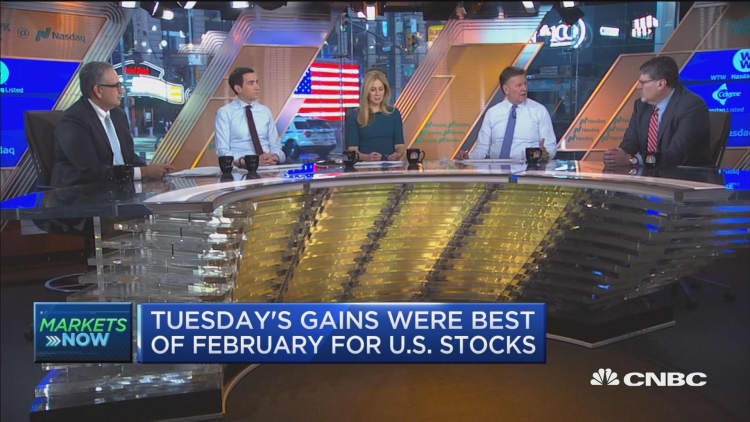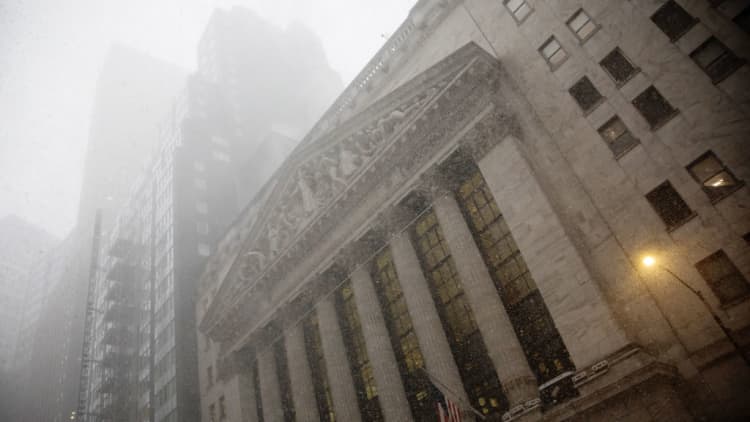
Doug Ramsey, chief investment officer of the boutique Leuthold Group, on CNBC Wednesday laid out a series of worst case scenarios for stocks, including a "broad and deep revaluation" of the market during the next recession.
Ramsey said he sees a U.S. economic recession in the next two years that could wipe out all the stock market gains of Donald Trump's presidency. The , as of Tuesday's close, was up 28 percent since Election Day on Nov. 8, 2016.
During the past three recessions, the S&P 500 lost about 37 percent from December 2007 to June 2009; lost about 2 percent from March 2001 to November 2001; and actually gained 5 percent from July 1990 to March 1991.
Over the next year, Ramsey believes the S&P 500 could "undercut" last year's closing low of 2,351 on Christmas Eve, which capped off a volatile year and a dismal final three months of 2018.
"I think it's going to be scary over the next couple of months," Ramsey said in a "Squawk Box" interview, a day after the S&P 500 surged nearly 1.3 percent to 2,744 for its third straight positive session. The index, however, remained about 6.8 percent below its all-time closing high of 2,930 back in September — even with the 16.7 percent gain since Dec. 24.
Ramsey, in making his case, reiterated a couple valuation comparisons he made in mid-December. He said a markdown to the same price-to-earnings ratio seen at the October 2007 top would send the S&P 500 to 2,250, about 18 percent below Tuesday's close. The same comparison but using price-to-sales would sent the index to 2,050, about 25 percent lower.
Investors might want to consider bonds rather of stocks, Ramsey suggested.
Yields on 2-year, 5-year, and 10-year Treasurys are all "below levels they hit at the Christmas-Eve lows" in the stock market, he said. "You could be back to having a 1-handle on the yields I just mentioned — 2s, 5s, and 10s. I don't think it's a bad place to park money right now; away from stocks and into the intermediate part of the Treasury curve." A 1-handle means a number below 2 percent.

Many Wall Street strategists are cautious after stocks touched a bear market — down 20 percent or more from their recent highs — at the lowest levels of 2018. But there's certainty debate on whether the market will re-test those lows.
In fact, Tom Lee, co-founder of Fundstrat Global Advisors and former J.P. Morgan chief equity strategist, told CNBC last month that he believes the Christmas Eve low could very well be a generational bottom. "I think 2,350, for a lot of reasons, is the low that people have to treat like 2009. I think what happened last year is a lot like 2008. And this year may play out a lot like 2009," he said on Jan. 31.
For all of 2009, the S&P 500 gained nearly 26.5 percent after hitting a financial crisis closing low of 676 on March 9 of that year.


